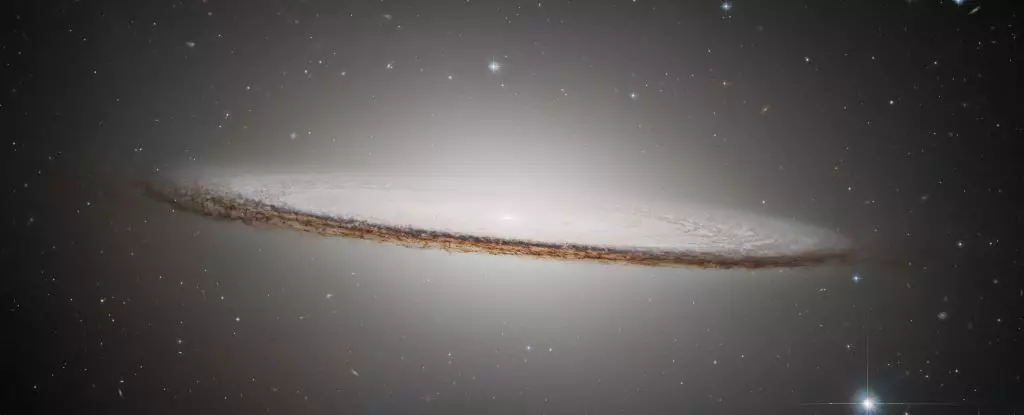The Sombrero Galaxy, known scientifically as Messier 104, is not just another celestial body; it is a breathtaking marvel that has captured the imagination of astronomers and stargazers alike. Located approximately 31 million light-years away within the constellation Virgo, this galaxy stands out due to its peculiar orientation. Unlike classic spiral or elliptical galaxies, the Sombrero’s unique disk shape with a luminous core offers an extraordinary perspective of cosmic beauty. For 35 years, the Hubble Space Telescope has expanded our understanding of such galaxies, with the Sombrero serving as an iconic representative of this endeavor.
An Intriguing Duality
What sets the Sombrero Galaxy apart from its neighbors is its hybrid structure. This peculiar galaxy embodies characteristics belonging to both systematic spiral galaxies and more sprawling elliptical ones. While it might seem to straddle the lines between categories, this very ambiguity only serves to enhance its allure. The vast, thick dust lanes that encircle its galactic plane act as a cosmic frame, lending an almost “hat-like” appearance, which is how it derived its name. The interplay of the galaxy’s vibrant centers and pronounced dust regions provides a fascinating study that challenges our conventional understanding of galactic formation and classification.
The Beauty of Detail
Recent advancements in imaging techniques have breathed new life into our perspective of the Sombrero Galaxy. Initially observed by Hubble in 2003, the latest reprocessing of those images has uncovered an intricate tapestry of stars and cosmic dust that was previously hidden from view. The galaxy’s bright core, coupled with its beautifully contrasting dark lanes, creates a stunning visual that draws both professional astronomers and amateur enthusiasts toward its confluence of light and shadow.
Despite being visually striking, the Sombrero Galaxy boasts an intriguing paradox—it is relatively quiescent in terms of star formation, producing only a solar mass’s worth of new stars each year. This restrained activity invites contemplation about the lifecycle of galaxies, particularly how a seemingly vibrant galaxy can exist with such a subdued birth rate.
The Mystique of a Black Hole
As the saga of the Sombrero Galaxy unfolds, we must also acknowledge the presence of a supermassive black hole at its center, estimated to possess a mass of around 9 billion suns. This hidden giant plays a significant role in the galaxy’s dynamics, showcasing the complex dance of gravitational forces at play. Observations from the James Webb Space Telescope (JWST) have revealed even more layers of complexity, including prominent clumpy dust formations surrounding the galaxy, adding to its multifaceted nature.
A Favorite Among Celestial Enthusiasts
The Sombrero Galaxy is, without question, a dream for astronomers. Its captivating views provide endless opportunities for study and aesthetic appreciation. As more advanced telescopes continue to unlock its secrets, we find ourselves increasingly enchanted by this beautiful anomaly in the vast cosmos. Whether you’re gazing at it through a telescope or admiring wallpaper-sized images available through the ESA Hubble website, the Sombrero Galaxy remains a symbol of wonder—a reminder of the intricate beauty of the universe we inhabit.


Leave a Reply